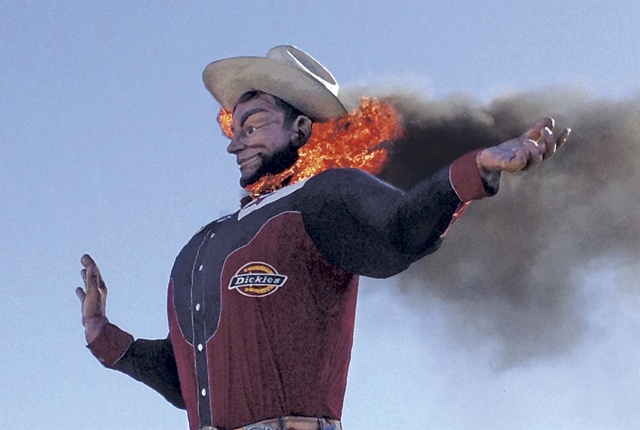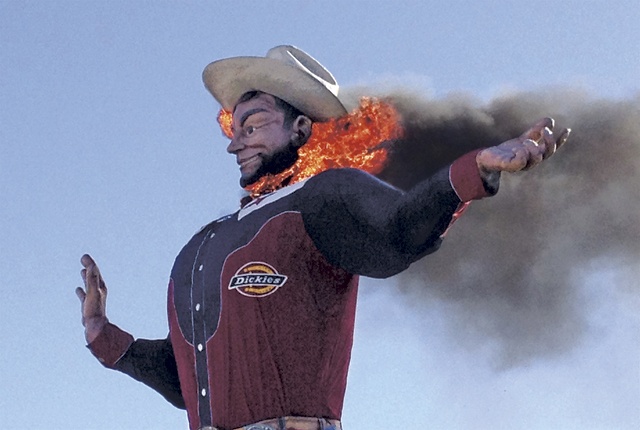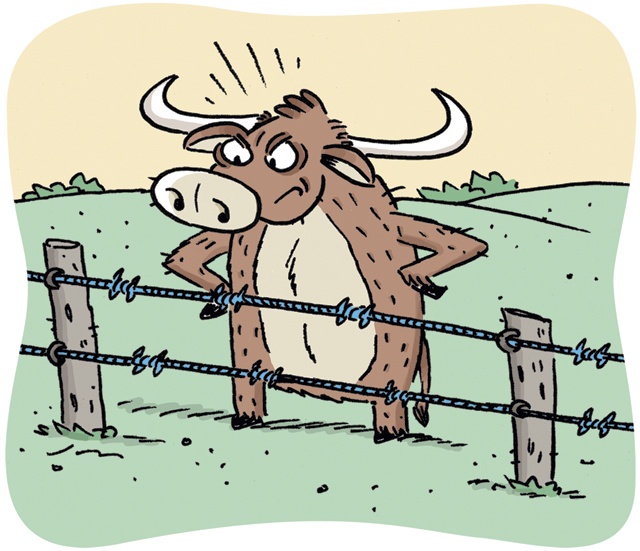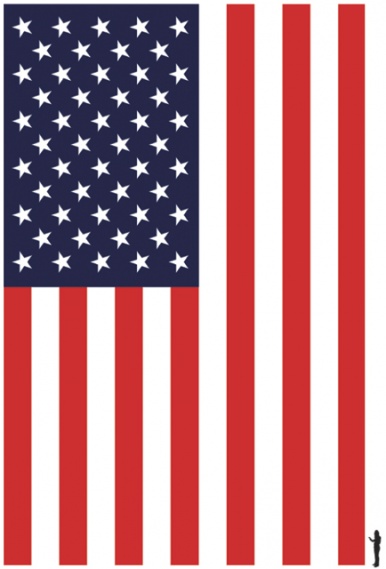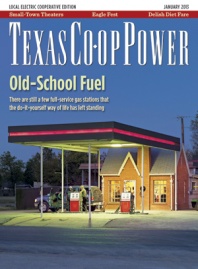Our monthly compendium of things we’ve dug up has a more solemn tone than usual. Part of the annual 9/11 ceremonies in New York featured a gigantic American flag proudly crafted in San Antonio. Visitors to Galveston get to see, in 3-D for the first time, the USS Hatteras, sunk off in the Gulf during the Civil War. And we bow our heads for Big Tex.
We Have a Winner
Joseph Glidden was born 200 years ago—January 18—in New Hampshire, though he later became a farmer in Illinois, where he made an invention that dramatically changed life in Texas.
In 1874, Glidden was awarded a patent for barbed wire. Around the same time, hundreds of designs competed for the patent, but Glidden’s “Winner” wire was the most commercially successful. In 1876, a salesman put up a fence of Winner wire around some longhorns on Alamo Plaza in San Antonio, touting it as “light as air, stronger than whiskey and cheap as dirt.”
Barbed wire quickly closed off the open range. It led to more controlled livestock breeding. It contributed to the end of long cattle drives and Indian raids. And it drastically reduced demand for longhorn cattle, which were best suited for the open range.
The invention quickly made Glidden one of the wealthiest men in the nation. After multiple transactions, United States Steel Corp. held a near-monopoly on the product.
In McLean up in the Panhandle, the Devil’s Rope Museum, served by Greenbelt Electric Cooperative, invites you to “get hooked on barbed wire history and lore.”
Texas Pride, in All Its Glory
When Americans, for the 11th time, marked the anniversary of the 9/11 attacks on this country in September, a huge symbol of patriotic pride was unfurled, revealing the handiwork of a little Texas company that flies above the radar.
The 5,400-square-foot U.S. flag raised at One World Trade Center was produced by the Dixie Flag Manufacturing Co., in San Antonio. Plenty of Dixie’s flags have waved in prominent places—some larger than the 9/11 one—but none has been so carefully crafted.
“To be asked to make the flag is exciting, so very humbling. You want to get it right,” company president Pete Van de Putte told the San Antonio Express-News. His grandmother started the company in 1958. “Every detail, from the largest star to the small stitching, has to be absolutely correct.”
And so six workers devoted three months to the task, turning 560 yards of durable polyester and 1,650 yards of nylon thread into Old Glory. It weighs in at 360 pounds, with 55-inch-high stripes and stars that measure 42 inches across.
Revealing the Hatteras
This month, the public can get a rare look at the USS Hatteras, the only Union ship sunk in the Gulf of Mexico during the Civil War, when 3-D photos are displayed for the 150th anniversary of the sinking. The exhibit will be January 11-13 at the Texas Seaport Museum in Galveston.
Divers in September 2012 used sonar technology to generate images of the Hatteras for the first time. The wreckage, which rests in 57 feet of water 20 miles off Galveston, was discovered in the 1970s.
Researchers expected the vessel to be damaged from shrimp nets, but James Delgado of the National Oceanic and Atmospheric Administration said about 80 percent of the ship remains intact. “You can actually see how the thing is put together,” Delgado told the Houston Chronicle in September. “It’s as if the lights have been turned on in a dark room.”
The CSS Alabama, a known Confederate raider, sank the Hatteras on January 11, 1863, after about 13 minutes of fighting. Two men are entombed in the wreckage, making it a war grave protected by the Sunken Military Craft Act, meaning the ship can never be moved.
Chipping in After Sandy
Out of the 8 million people who lost power in the wake of Hurricane Sandy after it made landfall on the East Coast in late October 2012, only 100,000 were co-op members. And even though most members had power restored within a week, co-op personnel kept right on working. Co-ops from affected states and beyond—more than a dozen states sent help—dispatched workers and bucket trucks to help investor-owned utilities repair the damaged electrical equipment and bring power back to the people. That’s what co-ops do. Through cooperation, they won’t leave their people—even their distant neighbors—in the dark.
Goodbye, Old Friend
Big Tex, the iconic, 52-foot-tall cowboy statue watching over the State Fair of Texas since 1952, is no more.
On October 19, an electrical short that started in his right boot caused this cultural ambassador to catch fire. Flames and smoke shot up his body, which acted as a chimney. Bill Bragg, the voice behind Big Tex for 11 years, says Tex went quickly.
Officials, including Dallas Mayor Mike Rawlings, promise that the icon will be rebuilt “bigger and better” and in time for Fair ’13.
Big Tex was built in 1949 as a giant Santa Claus for a Christmas celebration in Kerens and subsequently bought by the State Fair for $750.
By the Numbers
12% of Texas’ population resides in rural areas.
14% of working Texans have jobs related to agriculture.
